14
Elizabeth MacKenzie: Intervening Moments8 December 1980
YYZ Artists' Outlet, 567 Queen Street West, Toronto, Ontario, Canada
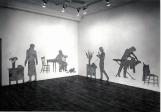 Credits:
Credits:Elizabeth MacKenzie, Intervening Moments, 1980. Graphite on existing walls. Installation view, detail.
Photo: Peter MacCallum
15
Paul Wong: Confused Sexual Views20th Century, Circa 1984
Vancouver Guide
 Credits:
Credits:Sara Diamond, "Clear about Confused," Vancouver Guide, 1984, page 8.
16
Paul Wong: Confused Sexual Views20th Century, Circa 1984
Vancouver Guide
 Credits:
Credits:Sara Diamond, "Clear about Confused," Vancouver Guide, 1984, page 9.
17
Elizabeth MacKenzie Interview by Peter Joch27 July 2012
YYZ Artists Outlet, 140-401 Richmond Street West, Toronto, ON
Elizabeth MacKenzie interview
By Peter Joch
Peter Joch: You were a board member and a founding member of YYZ since 1979. Can you tell me a little about how YYZ came about, and its origins?
Elizabeth MacKenzie: A number of people that were graduating or had recently graduated from OCAD were thinking about what might happen next. We wanted to maintain the sense of community we'd felt as art students. There were a number of artist-run centres in Toronto at the time, but we couldn't see how we might fit in. Since we enjoyed talking about art and being together, it made sense to develop a project that would enable us to see each other, and continue these discussions. I can't remember the practicalities of how the gallery came about. We started out with nothing, and worked as a group. Someone found a great space, and we put together some money to pay the rent. Then we sold beer at the openings so that we could maintain the space. From the perspective of time, it seems like it all came together quite easily, but it probably didn't. The space we rented was overtop of a grocery store on Queen Street West. It was a wonderful space with a big window across one wall that looked out over the street. I think the gallery started a year after I left art school; I knew that it was going to be a very lonely world unless I made a commitment to maintain relations with my colleagues. I thought of the gallery as a place to continue my development as an artist.
Now at that time, were there a number of artist-run centres in Toronto?
Yes, there was CEAC and A Space, and I can't remember what else. CEAC and A Space were definitely well established at that time (although CEAC closed around this time).
No Mercer Union yet?
Mercer started up around the same time as us. I think we came first, but I'm not entirely sure. Back then, it seemed like there were big differences between us, but at this point, I'm not sure what they were. We were like twins, in some ways.
As far as the mandate of YYZ, Decalog (the YYZ publication) talks about the return of representation in the early 1980s that was happening after conceptual art . . .
Yes, we were concerned with representation, but the people I felt most connected to were interested in photo-based or technologically mediated production, while not rejecting more traditional ways of working. We weren't as interested in painting as other groups, like ChromaZone that emerged around that time, although we showed painting. My closest friends at YYZ were from a similar background-working across different disciplines and different platforms. A number of the people at YYZ came out of the Photo-Electric Arts program at OCAD. We were interested in conceptually based projects, and not as concerned with traditional media, without excluding it from consideration. Our work was about issues of representation informed by theories and ideas circulating from Europe, and elsewhere, which had to do with deconstruction, photo-based production, photo-text work, and video.
Which is interesting because a video, Robyn and Nadine (black and white video, sound, 12 min., 1979), was your first artwork exhibited at YYZ.
Yes. After you made contact for this interview, I was looking though my archives for things to send you about the early years of YYZ, and I came across the 1979 review of the show from Centrefold magazine called, "An Evening of Sound and Video and Performance," by Lisa Steele. When I was coming out of art school, Lisa was an established artist who soon became a teacher in the Video department at OCAD. To have her recognize that evening and speak about my work was very gratifying.
Do you remember that video?
Yes, not too long ago I transferred it to a digital format, so I've seen it recently.
I made it when I was still a student at OCAD. I worked in the Video department as a video monitor (laughs), picking up cables, and organizing stuff. I wasn't really a tech person, but I wasn't afraid to ask for help, and there were great people who worked there who were willing to help with technical questions.
I had an odd relationship with OCAD-I kept taking a year off here and there, and I also went to New York on their off-campus program, so it took me about five or six years to finish my diploma since I kept leaving and coming back. I met these two women, Robyn and Nadine, at a summer job in Lake Louise. They lived in Toronto, so I made a video project about their friendship, which I found quite extraordinary. I used a technique where you take fifty percent of the image of one and fifty percent of the image of the other, and blend them so that while they talk their two faces intermingle.
It's strange that the first work I did as a recognized artist after art school deals with the same issues I'm working with right now; my current work interrogates portraiture, and is about faces and intersubjectivity. I've done all kinds of other work in the years since that project, but now, as a mature artist, I continue to deal with very similar issues of intersubjectivity, fiction, and storytelling. The face is such an important locus of meaning-an ambiguous, shifting field of interaction and interpretation. So, these kinds of interests have a tendency to come back to us as artists.
It was significant that Lisa wrote about that project; when somebody pays attention to what you do, and acknowledges it, you take it more seriously than you might otherwise. So, that was a crucial project for me, and to have it included in that evening at YYZ was important as well. We didn't really have a shape for the program that evening so it was kind of all over the place, but it was quite magical, as I recall. Everything worked.
Can you tell me about the shift from video to drawing?
I was doing video when I was at art school. We didn't have the same kind of personal video technology that we have now. It would be difficult (and expensive) to have your own video camera. I spent a year in New York in the off campus program that OCAD had. We had a Portapak there, and I did a lot of videotapes that were all, like (in a deeper voice), "A woman walks into the camera, she sits down at the table, she begins to write." (Laughing) . . . that kind of stuff. So, I did these very serious and self-conscious videotapes. I also started drawing on the walls of the studio that we had in New York. I would draw the cast shadows of things using powdered graphite. I don't know how I decided to use graphite, but ever since then-since the very beginning of my drawing practice-I've loved graphite, particularly its provisionality. For me, there was a relationship between making videos and drawing with graphite because they both had a temporal, ephemeral quality. I was drawing shadows, which were ephemeral, with a material that could be erased, and was not seen as permanent material.
When I came back to Toronto from New York, I didn't have ready access to video equipment. I didn't want to negotiate the use of video, so I continued drawing. I just wanted to work on my own, I guess. My first show was at Mercer Union, and then I did a show at YYZ in 1980, which was a really important show for me (Intervening Moments, December 12-20, 1980).
I was representing the life that I was in, but interrogating that life as a kind of shadow play. I loved the modesty of drawing. I liked the fact that you could do it very cheaply, it wasn't considered valuable. When I was in art school, we discussed the commodification of art, which is why I think video was so interesting to me. I didn't have the desire to do performance, which was another way of addressing the issue of not making things. Drawing was a good place to work because it didn't have the same history, weight, and value that other forms did. I was always interested in the idea of narrative, but also of the problems of narrative, and the provisionality of narrative, the provisionality of history. I wanted to produce something that one could imagine being erased or to imagine it disappearing. I loved drawing directly on walls, and having them painted over after the show. For me, that was an emancipatory process-to do something that would eventually disappear.
Perhaps the most important show at YYZ in the 1980s was "Monumenta," and you exhibited in that show; and, were you also one of the show's organizers?
I didn't organize it. I think we were kicking around ideas, and my colleagues told me that I'd come up with the idea. I don't really remember. It's one of those situations where you're sitting around with friends, probably drinking, and you're talking about what you might do, and it just seemed like a really good idea to do a tour of the now in Toronto. There was a real momentum in the city between us at YYZ, and our colleagues and friends who were working and developing programming at other venues.
The idea of doing a big show throughout the city seemed like a really great idea, but I didn't do the hard work. I may have helped put the idea out there, but I didn't do the heavy lifting. I just think that we as a group had a momentum towards it, and, once again, I'm probably being very naïve here, but it seemed easy in retrospect. There were obviously people working very hard to make it happen, but it was very exciting, and a lot of fun.
In Decalog, it's described as really democratic.
Yes, we were trying to do something that was collective, and not about hierarchies-it wasn't about representing elite, blue chip artists. It wasn't so much about the things as it was about the ideas.
But, it wasn't a free-for-all show.
It represented a serious effort to produce a significant exhibition of the work being produced in Toronto. Quite a few people at YYZ, like Stan Denniston and David Clarkson, had previous gallery experience. We wanted to make sure the show looked good; we weren't interested in producing an amateur exhibition.
Speaking of curating, I think in 1986 you curated People, Places and Things (with Rebecca Garrett).
Yeah, the drawing show.
Can you tell me about the show, and the curating aspect?
We had these curatorial meetings throughout the year, to look through the piles of submissions we received. By the mid-eighties, we were getting lots of submissions to YYZ. I don't think we'd developed a specific mandate or curatorial premise, but we had to feel committed and engaged by the work we showed, and to see it as something we had some kind of relationship to.
One of the great pleasures of being on the board was being involved with setting up the various exhibitions. One of the board members would take responsibility for each of the exhibitions. We'd agree to be responsible for the artist, and the installation of their work at YYZ. I can't remember what year it was, but we had a show by Nicole Jolicoeur from Montreal, and I remember being her buddy. She and I really hit it off, even though I'd never met her before. She turned up at the gallery with the works she was showing, and it was so amazing to have an immediate connection with somebody you'd just met (although I'd seen her work in slides). She lived in a different city, and in fact, spoke a different language, but we had this instant affinity. I loved having such an intimate relationship with her, and her work in the gallery. It was very inspiring. Ever since I've been an artist, I've always believed that social or collegial relationships with other artists is what helps you maintain your energy as an artist. Social relations are really important to personal motivation. If you don't maintain contact with colleagues, friends, and other artists it's hard to move forward-you lose momentum on your own.
Back to the People, Places and Things show (February 24-March 22, 1986), we were at a curatorial meeting looking at lots of applications, and I remember that I always paid particular attention to applications that featured drawing. At that point, there wasn't that much drawing happening, so when I saw drawings I paid attention. I'd been in a drawing show at Gallery 76 (the student gallery at OCAD) a couple of years previously called Quick Draw, put together by David Clarkson. So there was some consideration of drawing, but it was very intermittent, and not of major interest.
So, during this particular curatorial conversation, we noticed that there were a few people who had done drawing, and I just didn't want to let them go so Rebecca and I decided to put together a drawing show. I can't even remember how many people were in the show. It was one of those moments when you say, "Oh, these things go together!" It was quite provisional. There was obviously a link through drawing, but also through the subject, and the various approaches to drawing. We felt that these works had something to say to each other, and we wanted to see them together. We didn't have that many group shows, but occasionally they emerged when we noticed some synchronicity that we attended and responded to. Although this sounds like a cliché, the show felt very easy, and it ended up looking really good.
Since then, I've done a number of other curatorial projects that emerged out of my concerns as an artist. The years that I spent looking at applications at YYZ taught me a lot about how artists can present their ideas, how to articulate what you're doing, and what you want to do.
YYZ shows are currently not curated; was this so in the 1980s?
We mostly showed what came in though the application process, but occasionally we felt that something would work better as a group show. Then there were the really big shows like Monumenta or The New City of Sculpture. Another thing that we did in 1986 was the YYZ World Tour with the Embassy Cultural House in London (Ontario), which was a lot of fun. We pursued the idea that when you encounter artists you feel an affinity with, like Jamelie Hassan and Ron Benner in London who'd shown at YYZ, you'd do an exchange with them. So that was a curatorial premise, even though we all selected our own work to go to London. We also did an exchange with (N)on-commercial gallery in Vancouver, and I ended up going to Vancouver with the exhibition, and really hitting it off with the people involved with that gallery. Then, a number of people from Vancouver come to Toronto with their exhibition.
These were shows that were presented as collectives or curatorial projects. We responded to things that resonated for us. These were things we wanted to see, we wanted to have a conversation with these people because their work was of value to us, and we wanted to look at it at more closely.
Can you tell me about the position YYZ held in the Toronto art scene compared to other artist-run-centres? Did YYZ mostly show photo-based work?
Yes, we showed photo-conceptual or conceptually based work, but there were exceptions to that. It was important to keep showing video, performance, and other kinds of programming. In addition to the big shows, we did a number of conferences in the 1980s. We felt it was important to promote critical discussion, to create conversations in relation to art making, and to acknowledge theoretical considerations. The social issues beyond, and related to the work were important.
Was there something unique to YYZ that other centres didn't have?
I really don't know. We had a really great community. In retrospect, I don't know what the difference between Mercer and YYZ was, but at the time it felt like there was a very distinct difference. This was the gallery most similar to us, and then there was Chromosome, who was interested in figurative painting and expressionistic work, and less concerned with theory, and reading and writing. That's probably wrong, but that was my impression.
A Space was more overtly political, and dealt more specifically with social justice issues. Certainly these were important issues to us (particularly when it came to censorship), and I remember being involved in projects that A Space and other galleries initiated.
We organized a number of international exhibitions, but when you look at the conferences YYZ organized around this time the focus is more about "What can we say to ourselves, here and now?" and "What is our shared understanding of art-making as a social and intellectual endeavour that is unique to this time and place?"
YYZ had an abiding interest in the relationship between theory and practice. Writer and theorist Jeanne Randolph was closely linked to YYZ in the 1980s, and YYZ published a number of her books. She and I became very good friends, and her 1982 essay, "The Amenable Object" (included in her YYZ book, Psychoanalysis and Synchronized Swimming), had a tremendous impact on how I thought about art making. Jeanne's theories in relation to psychoanalysis and intellectual history linked making art to ideas outside the art world, and outside of the artist's individual concerns. This really appealed to me; the idea that art making was an intellectual pursuit, this is an idea that grew and developed through my years at YYZ.
In the publication Decalog, Barbara Fischer talks about an artist-run-centre as an alternative space, and a service organization funded by the government. Was there a sense of YYZ being in-between these positions in the early days?
We never considered ourselves a service organization. Maybe that's naïve, but it was important to us (and continues to be important) that Canada's arts funding remains an arm's length proposition. There were a number of important censorship issues that we struggled with in the 1980s. YYZ was active in the Six Days Of Resistance, and as a board we were very clear that we were not willing to submit the work we showed at YYZ to the provincial censorship board. Our immediate, shared, strong opinion about censorship represented the idea that YYZ, and artist-run culture in general, was something separate from the state. So yeah, while we may have believed that the state owed us a living, we didn't serve the state. When the issue of censorship came up, there was no question in our minds that we would not submit to the idea of the state having anything to say or do in relation to what we showed, and how we showed it.
There was a period when we thought that there might be police officers attending our events (laughs) because there were a few censorship arrests in Toronto at the time. I remember Stan Denniston standing up before we'd a start a screening, and saying, "OK, if anybody is a police officer here, we just ask you to get the hell out" . . . (laughs), everyone present had to agree to see videos that had not been submitted to the Ontario Censor Board. That was really important.
The issue of censorship was particularly significant in relation to videos being made by gay artists at the time, which were often sexually explicit. YYZ rejected any form of censorship. Within the art community, we would decide for ourselves what we wanted to see and not see. There was also the issue of Paul Wong's video, Confused/Sexual Views . It was an interesting period, and all of the board members at the time were adamant, and there was no surrendering to any kind of state intervention in programming decisions.
So, YYZ was an alternative art space, and not a service organization.
I don't know if we felt ourselves as alternative as places like CEAC or A Space. They were set up in direct opposition to the institutions and commercial galleries, and so forth. YYZ was less adversarial. We had important relationships with some of the emerging commercial galleries, like those opened by Sandra Simpson and Ydessa Hendeles. There was a strong continuity between what we were doing, and what they were interested in looking at. So, we didn't really see ourselves in opposition to other parts of the art world. There were so many people making art that you needed to have as many galleries, and as many venues for showing and talking about work as possible. So, alternative, yes, I think that was an important part of our history as an artist-run gallery, but I don't think that was the thing that drove us. The earlier generation of artist-run galleries had a more specific desire to make places that were significantly different from the existing art institutions. By the time we started showing our work, we were already informing and transforming the larger or the more established institutions. Many of the curators and directors at major Canadian institutions emerged through the artist-run system. That was their training ground; that was where they learned to look at art, and think about art. So, the artist-run system is not separate or divided from the larger institutions, but it has definitely transformed those institutions.
Now back to your art practice. Where do you situate yourself in the art world?
My interest in art making has to do with making meaning that is provisional. I'm interested in doubt and ambiguity. My most recent project is about the history of a building. I've drawn a series of faces on the walls of the gallery that represent the real and imagined former residents of the building. These faces interact with a series of framed works from the gallery's collection installed throughout the gallery. The history I present within my installation is provisional; it's almost entirely fictitious. It's predicated on the ideas, stories, and histories of the building that I've been able to discover.
This way of working began when I was an emerging artist, and working with my colleagues at YYZ. The speculative approach to art making, seeing it as something that transforms and changes. We have a shared moment here; a provisional moment of certainty, a provisional moment of clarity, but it doesn't stay, and there is a different one that will emerge the next time we have a conversation. So, I don't see certainty as a positive thing, I see art making as a process. That seems so basic to say this, but I think we still struggle with how art making is represented outside of the art world, both as a process and production. People still think of artists as having particular skills or gifts that they use to produce something that can be universally understood for all time. This has nothing to do with my concern as an artist. The conversations I have with my colleagues, and the fact that other people were willing to share their doubts and uncertainty with me has given me the momentum and ability to continue in spite of my doubts. That social exchange is what's most important-the warmth and energy you get from working beside, and with colleagues and friends.
Now that I live in Vancouver, I participate in a number of organizations in various capacities. I also share my process and work with my partner, Bruce Grenville, and friend Jin-me Yoon. Jin-me and I say we couldn't make art without each other, since the momentum we give each other as artist colleagues is so important. Losing momentum is part of the art-making process, but one of the best ways I know to get around this problem is to maintain social exchange with colleagues. That was the first lesson I learned through YYZ. You move through your fear. You move through your anxiety. You move through your doubt with this shared momentum that comes from colleagues and other artists. To me, that's something that's marked me as an artist. I don't think I would still be an artist today if I hadn't figured that out. Making art for as long as I have, there have been periods when I said, "Oh, I can't do this" or "Why bother, nobody's looking at this." But, I've always remembered what my friend Jeanne told me, "You know you can say that but it really doesn't matter, you're still going to do it." You can't stop doing what you do even if you say, "I'm not going do it." There's a certain kind of energy that you have once you've been making art for a long time. You might say, "I'm just going to doodle here," and of course, it ends up being a project. It's difficult to maintain confidence in yourself as an older artist, particularly when the work you make is not heroic. My work is all about doubt.
I have two grown children, which is another thing that's been significant to me as an artist. Having a domestic life, a family life is important to my identity as an artist. When I went to art school, there were very few artists, particularly women, who had children that were visible. Even today, if you look at the international world, I can't think of any. I mean Nancy Spero, thank goodness for Nancy Spero (laughs) . . . but even still, there are very few artist role models who have had children, and been able to maintain a practice. So, that part of my life took a lot of time and energy, and the way I got through was by connecting to other artists, doing projects, and organizing a conference. In fact, I'm writing on this issue for a new book, Reconciling Art and Motherhood. A lot more information on this topic still needs to be shared.
I agree with you.
This kind of discussion isn't only for women to consider, but it's still harder for women to maintain a practice as an artist when she has children. There are a number of points in our lives when it becomes difficult to maintain that identity as an artist. It could be that someone that you love is ill. Your parents might need your assistance or you get sick yourself. The best way to maintain that identity is through some form of social exchange. You need other people to acknowledging your practice. It's not a good idea to leave this to chance. When you're involved with something like YYZ, you think to yourself, "This is an artist-run gallery, so I must be an artist." In your darkest moments you need something outside of yourself that reflects back that identity. Right now, I'm feeling very strong as an artist because I have a show up at the Burnaby Art Gallery, so I must be an artist. People are writing about my work, and contacting me for interviews, so I must be an artist (laughs).
Boris Groys stated that contemporary art is the documentation of art. Thinking about how your work is not permanent, and all that survives of the actual finished piece of your work is documentation, how important is documentation to you?
Good documentation is of vital importance. My work is quite difficult to document well, since the drawings are usually done with graphite, so have a low contrast. Unfortunately, a number of my projects have been lost because of poor documentation.
I hired someone to photograph my current exhibition, and even though he did a great job, the local newspaper that published a review of this show decided to use an image of another artist's work (from the collection part of the show), even though the review discussed my installation, because the other work was more visually emphatic.
I'm not trying to make the work difficult to document, but I am interested in creating images that are difficult to see. They may not be where artworks are supposed to be. When the drawings are installed they can disappear, they may look like a mistake or a smudge on the wall. I see them, but I realize that they may not be visible to other people.
I was at the Burnaby Art Gallery during my show there, and realized that a couple of people visiting the gallery didn't notice my drawings on the walls. They stopped and looked at every framed work and every label, but passed right by my graphite drawings that were done directly on the walls. They were unable to see what wasn't presented inside a frame. The way I make my work is about the problem of seeing, and so that incident was significant for me to witness. I was gratified (laughs); I may be one of the few artists who is gratified when somebody doesn't see their work (laughs).
But, it's not quite accurate to say that all that remains of my work is documentation because when I prepare for an installation I do countless drawings on paper or on the walls of my studio to figure out what I'm doing. I (literally) need to get in shape to able to draw continuously and quickly while I'm installing; I need to be able to draw assuredly when I'm on-site. I must become very familiar with the catalogue of images I intend to use. I drew sixty-one faces on the walls of the Burnaby Art Gallery. All of these faces had been drawn repeatedly on sheets of paper before I did the actual installation. These drawings on paper are included in a number of collections, including The Art Bank.
I'm so happy with my show at the Burnaby Art Gallery and so excited about this working method of working with an archive that I've decided that I want to apply all over Canada and try and work with people's collections.
July 27, 2012 (January 2, 2013 revision)
Credits:Elizabeth MacKenzie, telephone interview by author, July 27, 2012 (revised January 2, 2013).
18
Mark Lewis: We Are The World27 April 1988
1087 Queen Street West, Toronto, Ontario
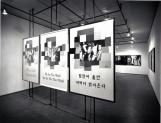 Credits:
Credits:Mark Lewis, We Are The World/White Noise, 1988. Cibachrome prints, industrial odour machine. Installation view.
Photo: M. Lewis
19
Mark Lewis: We Are The World27 April 1988
1087 Queen Street West, Toronto, Ontario
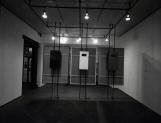 Credits:
Credits:Mark Lewis, We Are The World, 1988. Installation view.
20
Mark Lewis Interview by Peter Joch20 September 2012
Daniel Faria Gallery
Mark Lewis Interview
by Peter Joch
Peter Joch: I want to talk about how the exhibition at YYZ in 1988-We Are the world/White Noise-influenced what you are doing now.
Mark Lewis: I want to preface this by saying that, unfortunately, I don't remember very much about that exhibition. I think that the work I was doing then was part of a process of simply "trying things out." It was quite early in the development of my work, and retrospectively, I can say that I didn't really know yet what I wanted to do. I'm a little embarrassed now by some aspects of the work I showed then-for instance, the perfume machines that were attached to the back of the photographic panels. But then, this is the advantage of youth: one is not easily tamed by embarrassment. I can no longer recall precisely what I was thinking about when I made the work I exhibited. I imagine I was thinking about the limits of visuality, things we cannot see but perhaps want to see; but that may just be an ex post facto consideration.
I think, in a way, that early work was a detour that allowed me to think through things otherwise, something like what Victor Shlovsky called "a knight's move." I would certainly never exhibit perfume now, as the very idea seems quite preposterous. But as I say, very little is forbidden when you don't know what you are doing, but want to find out. Perhaps the posters, the images themselves have some relationship to what I do now. But the attention to all things olfactory-I can see no relationship between that and what I am doing now. The poster images were based on the catalogue cover of the famous 1955 Family of Man exhibition at the Museum of Modern Art. I appropriated the design and added "rolled" magazine images to the middle. So the work would seem to have an obvious relationship to photography and the history of photography. I trained as a photographer, so this work would have been a reflection or an investigation into the history and knowledge of that subject that as a young photographer I both inherited and engaged with. Today, I make pictures that move, and my work definitely engages with the history of photography, but also the history of painting and other things too. So there is some basic relationship between what I did then and what I do now. But to be honest, I feel like I'm a different artist now: I think that there's the work I made before I started making film, and then there are my films. In fact, I would say that it was only when I started to make films that I properly became an artist.
That's interesting. Do you remember what the perfume you used in the work was?
I have no idea. I think it was some kind of industrial odour that they use in toilets to neutralise unpleasant smell. I think those machines still exist, but I imagine they're a lot smaller now.
Around the same time you did public art works in Montreal.
Yes, at the old Mirabel airport. I installed smell machines and literary texts on smell in the airport toilets. I had just read Proust, and I was obsessed by the idea that smell could open up a world of memory and wonder. It baffles me now why I chose the toilets!
So, one of the three panels of the We are the World public art piece was exhibited in a bus shelter in Vancouver, and the three panels and the smell machine were at YYZ at the same time I believe. Was this deliberate?
I think this was just fortuitous. I received the original commission from the Or Gallery in Vancouver, and I made a single Family of Man poster, or at least my version of it. Instead of saying "Family of Man," it said "We are the World; You are the Third World." This was the title of an article that I had written just a year previously for The Guardian newspaper in London. That latter text was an attempt at a critique of the de-politicisation of poverty and hunger affected by Bob Geldof and the music industry's response to famine in Africa. So I just lifted the title from the original article and applied it to the Family of Man design. But, as I say, Vancouver commissioned the original work, and that's what I was working on when I was offered the show at YYZ. For YYZ, I made two additional posters using two different languages. One was Persian Afghan, and the other was Korean.
Do you remember why those two languages?
I think I simply wanted the work to be more of the world. I decided to use languages of people who lived in Toronto. There was a man who ran a café near my studio where I used to get coffee each morning, and he was a refugee from Afghanistan (Afghanis and Iranians speak the same language, more or less). I can't remember why I chose Korean, but I think at that time there was an emerging Korean community near where I lived up on Bloor and Bathurst. The choices were a mixture of calculation and accident I guess.
Could you talk about how We are the World interrogates representation? Perhaps about the shift from feminist representation of the body to representation of the male body, which starts appearing in the late 1980s and early 90s.
When I made that work, I was not too long out of art school (I was studying up until about 1986). I was obviously influenced by the classes I took, the books I read, and the teachers I met and learned from. When I first came to Toronto, I used to audit Social and Political Theory courses at York University. What was then called French theory was prevalent, and pretty much the core element of my graduate education. Basically, it was all we read or, I should say, tried to read, as I often struggled to understand much of it. But in essence, this reading and the teaching I followed, insisted on thinking of the subject (the viewer, for instance) as a socially, ideologically formed entity that could be "unpacked" or revealed in its complexity via psychoanalysis and the study of ideology. Feminist theory was central to this optic, as it insisted upon sexual difference as central to the making and forming of subjectivity. When I was studying, artists and filmmakers like Mary Kelly and Laura Mulvey were very present, and I was influenced by their work and their ways of looking at art and film. Apart from the usual political imperatives, I think it is worth saying that what they insisted upon was a kind of curiosity, and this was very pleasurable. Later on, I understood that it was necessary to dispense with the more didactic elements of this way of thinking. But the curiosity remains. Of course, the moment was crucially important, for me, and for many others starting out at this time.
Do you think that has shifted now?
Yes. I think a lot of work that came out of that way of thinking was actually very suspicious of the image, and as a consequence was deeply iconoclastic. The picture was felt to be "unreliable," and, therefore, it had to be qualified, deconstructed, mediated, or whatever. Of course, now it is the image's unreliability that I find so compelling and provocative. But back then, people thought you had to add things to the image in order to "correct" it or ground it-things like text, and so on, and I guess in my case, smell too. Doing things like that was, I think, to test limits, to test the ability of the image to convey information. I think younger artists today are much more confident and comfortable with the idea that an image can just stand on its own. They recognise that the image's ambiguity is part of its power, and the pleasure we get in looking at it and thinking about it. That's what I think now too.
You showed this work at YYZ; was it a deliberate decision to choose an artist-run centre?
I was a young artist who had only recently arrived in Toronto. I had moved back from London after art school, and was still doing my graduate work. I really wanted to show my work, and I wanted to be part of the community, I wanted to have a sense of belonging. So I applied for a show at YYZ because it was one of the places where artists that I liked and who I had started to get to know were exhibiting.
Do you remember the opening of the show?
I do not remember the opening at all. I don't remember very much I am afraid , though as we talk about it a bit here I am beginning to get a better sense of it.
You also exhibited Familiar Stories at the same time?
Yes, again those are works that I think were mistakes, or errors. I think I even recognised this very early on. There is nothing wrong with making mistakes, as long as you recognise this very quickly, and learn from them.
They were just experiments?
Yes, that is another way of putting it. I guess the only way to know if they are mistakes is if you put them out there, and then you discover that they aren't really what you thought they were. Sometimes, that revelation can be good and an indication that it was your ideas that were wrong, and not the work. But in the case of Familiar Stories, it was both the work and the idea that were wrong.
Were you involved in YYZ in any other way then as an exhibiting artist?
No. I knew a few of the people, Bernie Miller, Andy Patton, Joanne Tod, but not very well as they were of an older generation. They were artists and writers that had already gotten themselves a little bit established in Toronto. I would meet them at openings and so on.
Can you share if you remember the process for We are the World, or Familiar Stories or Burning?
Burning was a different exhibition.
Yes, it was an exhibition in Vancouver, but I believe, you showed the catalogue.
I think from the period we are talking about, the works I made for the Burning exhibition are still interesting to me. Here, I think, I was trying something out in a way that was interesting and liminal, in so far as they made a bridge between what I had been doing before and what I eventually did after. There is a kind of perverseness to these works that I still find curious. They were works that allowed me to move away from the image text idiom that had occupied me for some years. The texts became separated from the images (they were framed separately) and they became, like the images, highly fetishized, and became images actually. The image panels were made up of rolled magazine images, like in We Are The World. I think this decision had a lot to do with my interest and fascination in appropriation and re-photography, practices that were very prominent at that time, particularly in New York. But presumably it was also a practical response to my working conditions: I had a studio with a small table, and I had lots of magazines. So the assemblage of those sculptural forms that were eventually re-photographed was something that was possible.
What about your process for the work you do now, can you share a little bit about that?
Now, I work in film, as you know. Most of my films are location based, which is to say that I begin with a place or an experience in a place, and then try to understand how that place and that experience can be depicted through moving images. Sometimes it can take a few years before I understand what to do, and sometimes, though not very often, a few minutes. Most of my initial research is done on my bicycle: I cycle around London or Toronto, or wherever I am, and just look around. It's hard to say how and why something draws my attention. But it is strange because I do know immediately if a place is interesting to me. Then the fun part is trying to work out what it is that has "stopped" me. Sometimes, I never work that out, and the films are attempts to capture that ambiguity and uncertainty. I think I make, more or less, films about everyday life-often-small things, perhaps, almost invisible things. Whereas, when I made the work for the YYZ exhibit, I was interested in condemning the image for these limits and ambiguities. Now, I see these as part of the magic and wonder of the image.
What about your influences, are they the same as they used to be when you made your first work?
I think I am probably much more interested in the works of other artists today, whereas before I was much more influenced by them. That is to say, as a young artist it was necessary and inevitable that I would be in a relationship of mimicry to the artists that I respected and admired. Today, the work that I love and am drawn to over and over again, affects my own work in much more complex and less recognisable ways. Also, twenty-five years ago I was keen to situate my work in relationship to what we then called "critical theory." So I was very influenced by that imperative. Now, I am less interested in that idea. Maybe its "influence" comes through in other ways. That's for others to determine.
We've talked about which philosophical theories influenced We are the World, but what about your current work?
Back then it would have been chiefly feminist and Marxist reinterpretations of "the subject," and the introduction of Althusserian and post-Althusserian theory via Lacan's reinterpretation of Althusser and Derrida too. A lot of this stuff was a bit incomprehensible to me, then, as it is now. I remember finding the experience of reading that material intellectually painful; but there was also a kind of sexiness attached to that project, to be part of an excited community of people who were reading these books. It almost felt like a revolution. I do miss that heated feeling that many of us experienced, discovering and sharing something that felt new and daring. I think that moment has gone.
So you would say that the contemporary art world is not as theory-based as it used to be in the 1980s?
Certainly not the contemporary art that I'm making! Though there are other artists that are still very engaged with theory, but perhaps less explicitly. But it's all very different now, and if it doesn't feel quite as theoretical as before, that is probably because the artists in question tend not to wear it on on their sleeves, so to speak. We wore it on our sleeves because of that sense of excitement I just spoke about, it seemed like an opportunity. That all seems a bit silly and naïve to me now. Younger artists are probably more sophisticated in the way that they absorb and transform that theoretical material. Their relationship to it is both more complex and more ordinary, more every day. I think that is a very good thing. When I hear my daughter who is twenty-three, talk about Foucault, Derrida, or whatever, and I see that it's just part of her natural sense of knowledge, then I know that it's a good and measured thing.
It's more mainstream?
Perhaps, it's part of how younger people think and make decisions.
Were you in Toronto during the 1980's?
I lived in Toronto between 1983 and about 1990. I have been back a lot though, and as you know, I have made a lot of films here and round about.
What did you see in, what was your feeling of the art world in Toronto?
In the 1980s, Toronto was a much 'smaller' town than it is now; it was much more provincial. The art world was definitely local. Very few people here were exhibiting overseas. I would say that things have changed a lot, and there are also a number of very serious collectors of contemporary art, and they have made a real difference, supporting, sustaining, and promoting art made locally, but no longer simply locally appreciated.
20.09.2012
Credits:
Mark Lewis, interview by the author, September 20, 2012.
21
Monumenta4 September 1982
116 Spadina Avenue, 2nd Floor, Toronto
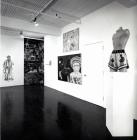 Credits:
Credits:From left to right: Doug Walker, Andy Fabo, Barbara Astman, David Cheung, top & bottom; Tim Jocelyn, foreground, Monumeta, 1982. Installation view.
Photo: Peter MacCallum
22
Struggles with the Image: Essays in Art Criticism16 December 1988
1087 Queen Street West, Toronto, Ontario
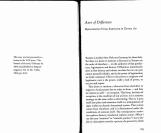 Credits:
Credits:Philip Monk, "Axes of Difference: Representation versus Expression in Toronto Art," Struggles with the Image: Essays in Art Criticism, YYZ Books, Toronto, 1988.
Page 185
23
Struggles with the Image: Essays in Art Criticism16 December 1988
1087 Queen Street West, Toronto, Ontario
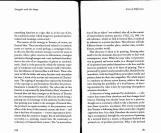 Credits:
Credits:Philip Monk, "Axes of Difference: Representation versus Expression in Toronto Art," Struggles with the Image: Essays in Art Criticism, YYZ Books, Toronto, 1988.
Pages 186-187
24
Struggles with the Image: Essays in Art Criticism16 December 1988
1087 Queen Street West, Toronto, Ontario
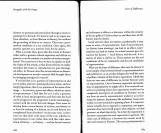 Credits:
Credits:Philip Monk, "Axes of Difference: Representation versus Expression in Toronto Art," Struggles with the Image: Essays in Art Criticism, YYZ Books, Toronto, 1988.
Pages 188-189
25
Struggles with the Image: Essays in Art Criticism16 December 1988
1087 Queen Street West, Toronto, Ontario
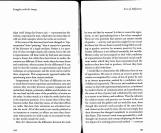 Credits:
Credits:Philip Monk, "Axes of Difference: Representation versus Expression in Toronto Art," Struggles with the Image: Essays in Art Criticism, YYZ Books, Toronto, 1988.
Pages 190-191
26
Struggles with the Image: Essays in Art Criticism16 December 1988
1087 Queen Street West, Toronto, Ontario
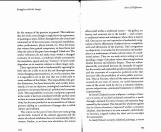 Credits:
Credits:Philip Monk, "Axes of Difference: Representation versus Expression in Toronto Art," Struggles with the Image: Essays in Art Criticism, YYZ Books, Toronto, 1988.
Pages 192-193
27
struggles with the Image: Essays in Art Criticism16 December 1988
1087 Queen Street West, Toronto, Ontario
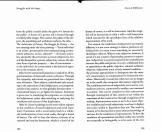 Credits:
Credits:Philip Monk, "Axes of Difference: Representation versus Expression in Toronto Art," Struggles with the Image: Essays in Art Criticism, YYZ Books, Toronto, 1988.
Pages 194-195